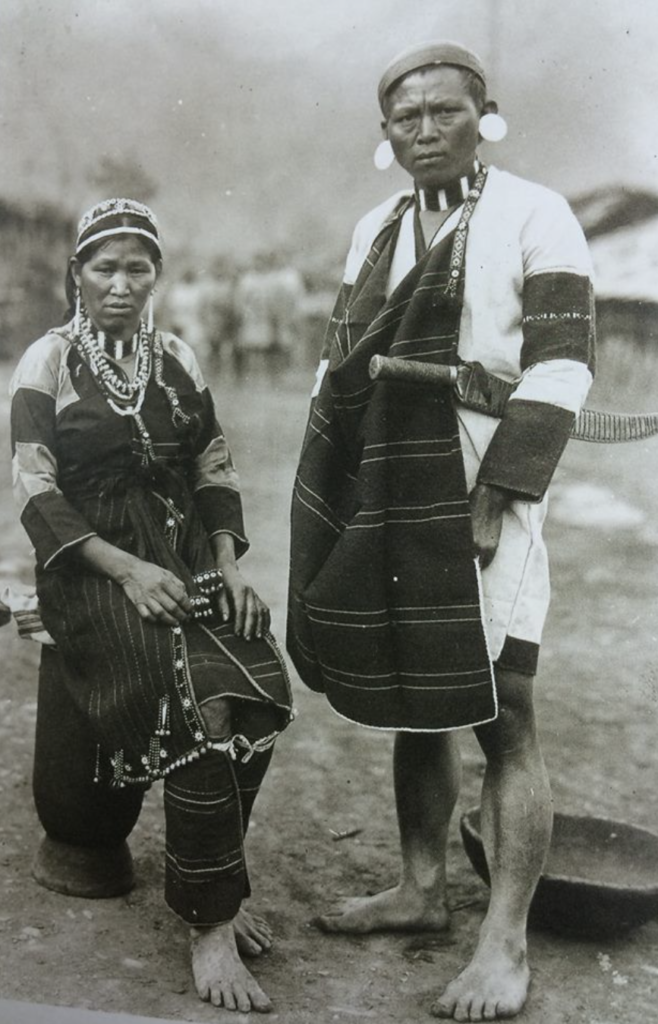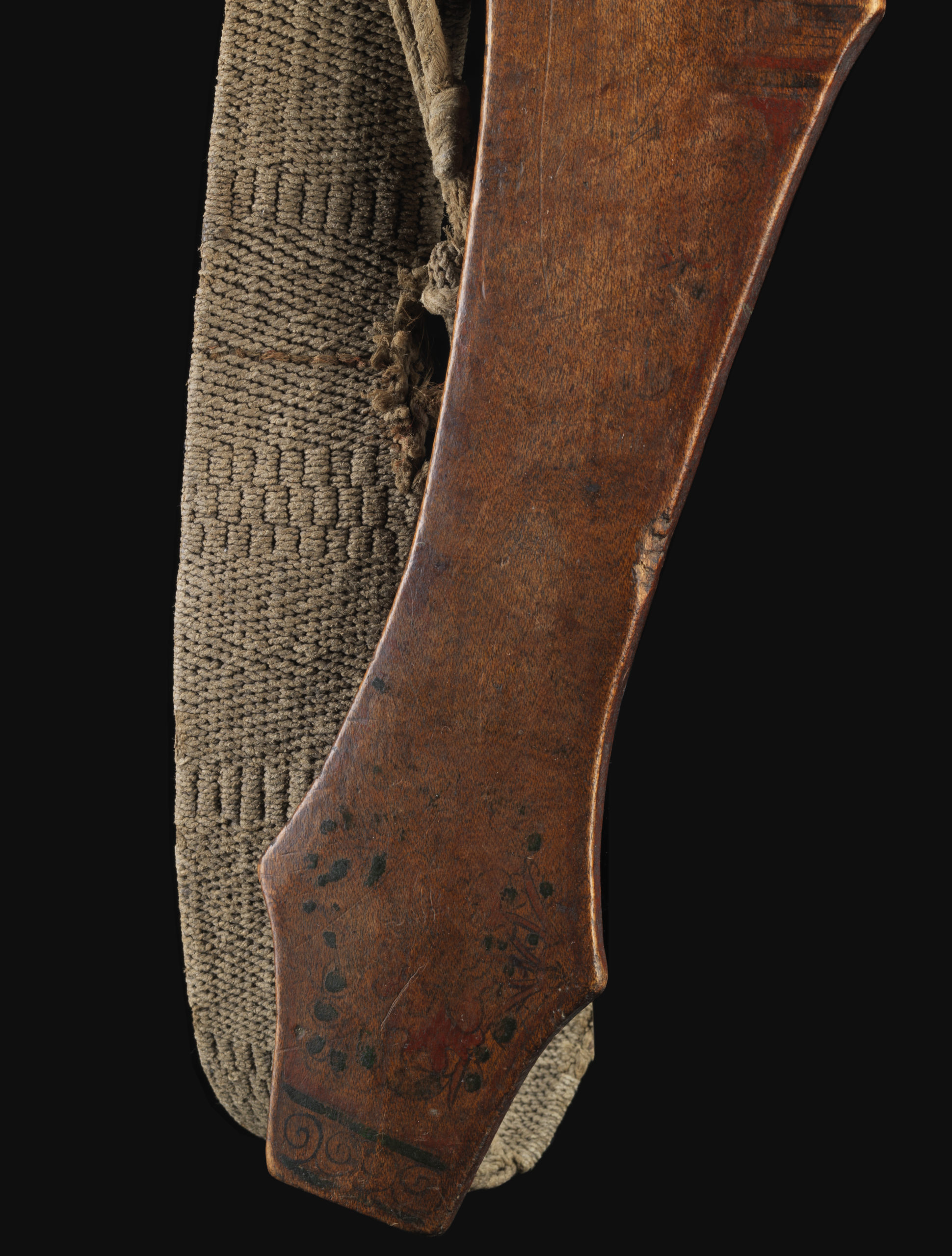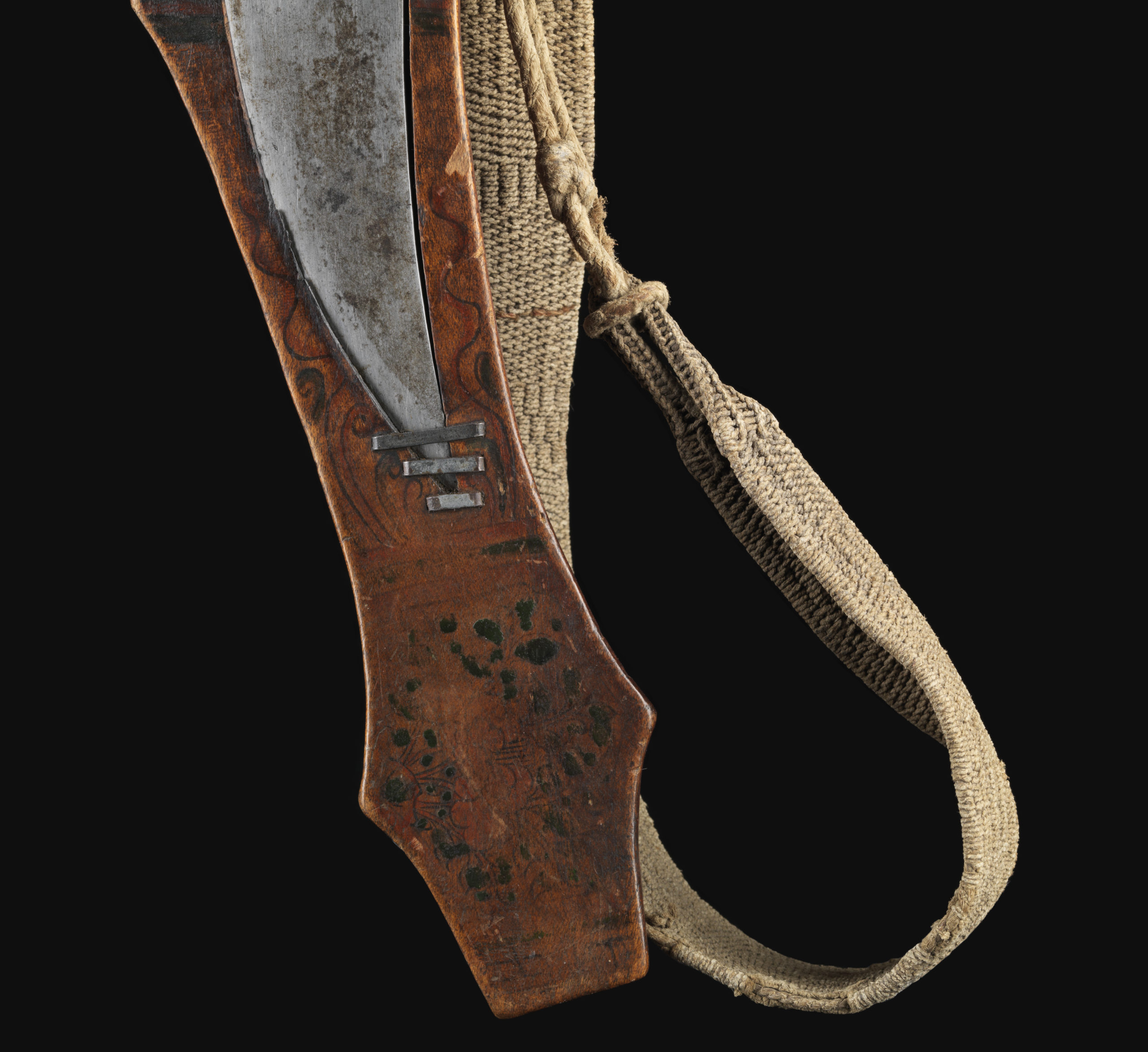Sword “lalau”
Knives lalau of this kind are known from the Nanto or Taroko area. However, they were also used by the Ami. A somewhat straighter form was known among the Pingpu, the indigenous Austronesian population of the Formosa plains, where a mixed population between immigrant Chinese had developed. The heavy, crescent-shaped back blade with a symmetrical cross-section is made of refined steel, suggesting that it was still being made in the 19th century. Later, industrially produced mild steel imported from Japan or China was preferred. This does not have the characteristic small “blowholes” and inclusions, as repeated in-self welding (refining) is no longer necessary; in addition, the strength is much higher, which allows thinner blades. The blade has a competently hardened cutting edge, which is selectively hardened in the traditional way. Only the part of the blade is heated for hardening (by immersion in a shallow pool of water). This facilitates the straightening of hardening distortion and reduces the risk of fatal blade breakage due to stress cracks, but produces blades with little elasticity. The method of hardening corresponds to the old Japanese method before the introduction of tsuchi-oki (hardening with insulating clay jacket), which was probably only imported from China in the Sui or T’ang period. The handle is made of brown hardwood skilfully braided with rattan bands.
The motif of a deer (or dwarf deer) in a stylised hilly landscape applied to the knife sheath here clearly indicates Chinese stylistic influences. It is found in almost identical form on the oldest keris sheaths, as they have been preserved in isolated cases in old European collections. This is interesting in so far as it is possible to conclude that Chinese artists were involved here as well. In some sources of the 16th century keris are referred to as “chinese daggers”, which may refer less to their origin than to specialised craftsmen. The red-black painting is executed with considerable sensitivity; the type and quality of the paint allows us to draw conclusions about the early 20th century with reservations. The red colour is considered to be ominous. Red and black are the dominant colours of scabbard design in Indo-Malayan metropolitan areas (particularly evident on piso sanalenggam the Batak), and have always been of particular symbolic importance on keris scabbards.
The manufacturers and users of knives of this type, the Atayal, also known as the Tayal or Tayan, are the second largest of Taiwan’s indigenous peoples (after the Ami). They speak a Formosa language with about 30 dialects. The meaning of the word “Atayal” is “real man” or “brave man”. The Atayal number about 100.000 people. They live mostly in the northern part of the Taiwanese central mountains and make up a quarter of all members of Taiwan’s indigenous peoples. The Truku and Sediq peoples, which were formerly counted among the Atayal, have been officially recognised as independent ethnic groups since 2004 and 2008 respectively.
| Object | Sword “lalau” |
| Culture |
North Formosa, Truku or Atayal |
| Time | 19th century/early 20th century |
| Dimensions | Length 66 cm |
| Material | Wood, steel, rattan, lacquer, woven band |









